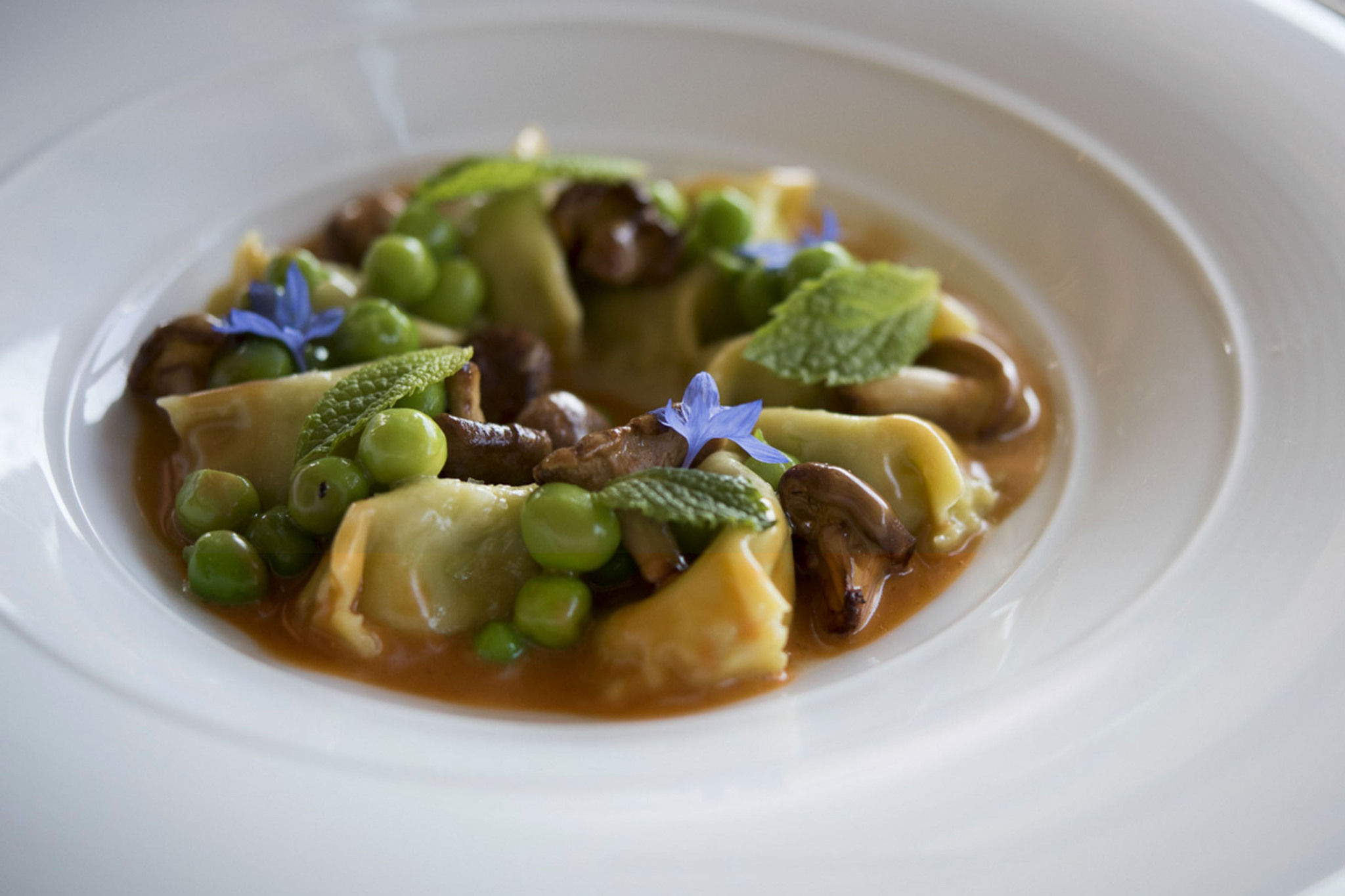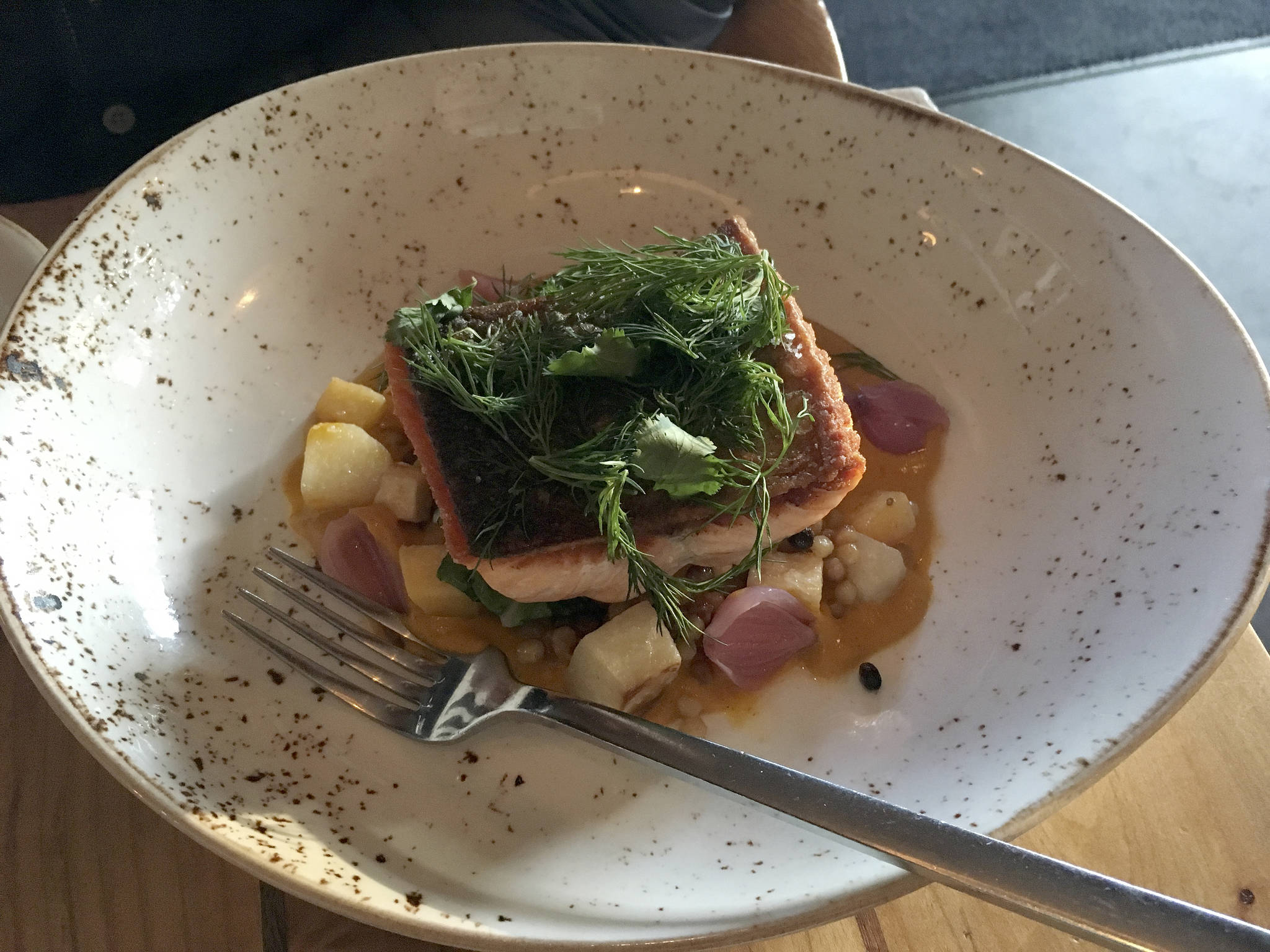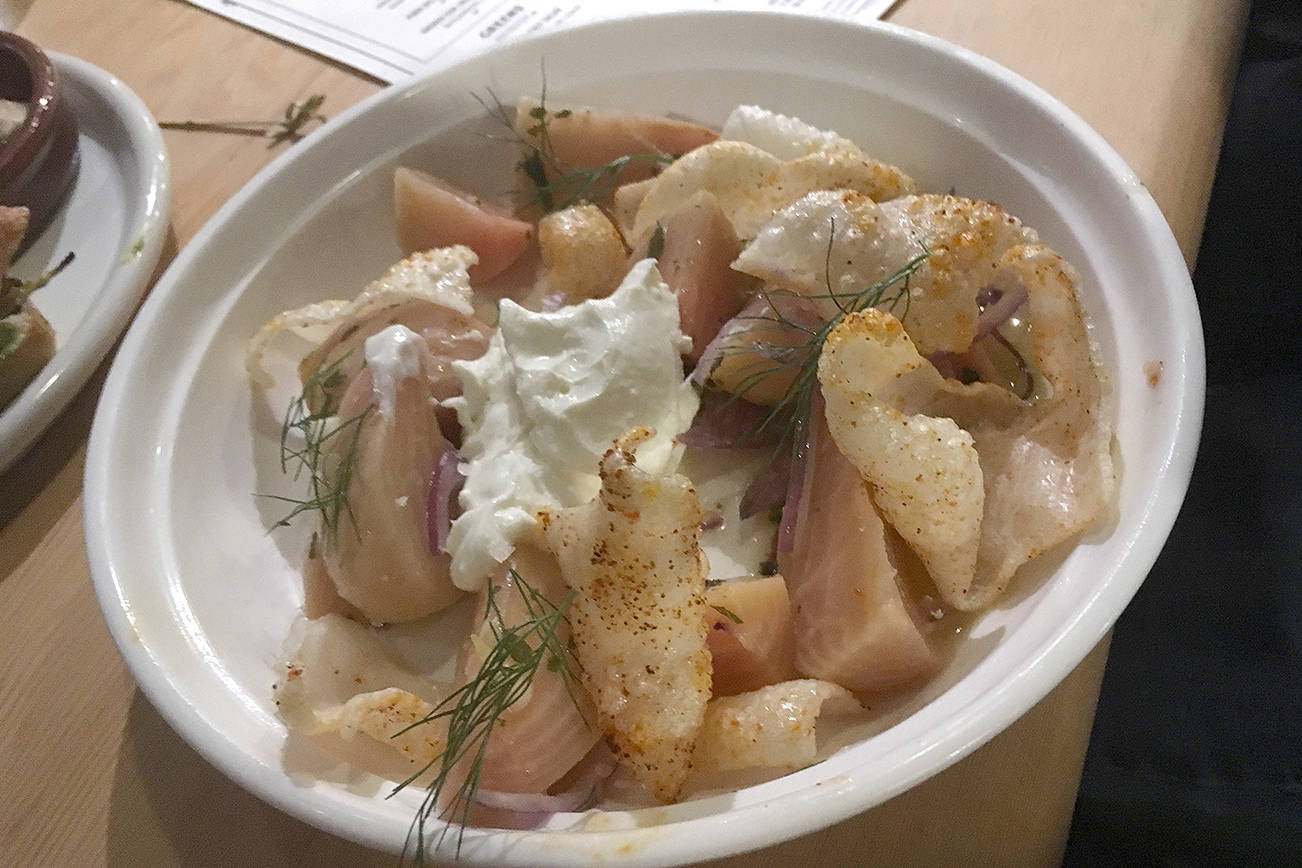Full disclaimer: I never had the privilege of dining at Book Bindery. A year after I started writing for Seattle Weekly, the acclaimed restaurant shuttered and reopened as Hommage, which I reviewed, and which closed soon after. But the collective disappointment of so many diners was certainly not lost on me. Along with Canlis, Book Bindery was one of the few bastions of fine dining in Seattle, a place where many celebrated anniversaries or simply splurged for a special night out.
In fact, when I went to Copine(6460 24th Ave. N.W., copineseattle.com) the new restaurant in Ballard from former Book Bindery chef Shaun McCrain and general manager Jill Kinney, a couple seated beside us at the bar chatted like old pals with bartender Ruven Munoz; they were Book Bindery regulars, and Munoz, along with a great deal of the staff, also are Book Bindery alums—all of whom believed enough in McCrain’s culinary prowess to follow him to his new venture. McCrain has an impressive resume, including stints for Thomas Keller at Per Se in New York and Michael Mina in San Francisco, and Copine, it would seem, finally allows him to craft a menu and an atmosphere that are both a culmination of his vast experience and a mark of his own.
While the food is contemporary American, rife with seasonal ingredients from the Pacific Northwest, it is grounded in French technique, and dishes—while painstakingly composed—never feel overtly precious. That’s likely because they are absolutely stunning both in conception and taste. I’ll jump past starters to describe what is sure to become a classic, the Grimaud Farms pithiviers de canard. A pithivier is a small, round, scalloped-edge pie painted with an egg wash for a golden, glistening exterior (think of beef Wellington). Here, the filling is shredded duck confit seasoned with cinnamon, nutmeg, and lemon zest, resulting in the subtlest lingering notes of baking spices, its savory sweetness complemented by sour cherries and candied pistachios. Unexpectedly and brilliantly, a few tiny, sharp turnips share the plate, and they’re as unfussy as the rest of the dish is laborious. In fact, Munoz, who’s a wonderful wealth of information, told us that this dish’s complexity almost disqualified it from the menu. Thankfully for us, it made the cut.
Another entrée, the crispy-skin sablefish, is quiet but assertive perfection as well. The fillet of sablefish—also known as black cod—is cooked the way you wish all fish was, a thin layer of crackly sear just barely clinging to the delicate, white meat beneath it. It rests stately in a bonito broth enhanced by woodsy Japanese mushrooms, sharpened with the addition of julienned hearts of palm, and texturally elevated with crisp slices of radishes. A few tiny stray pieces of basil seemed out of place, but surprisingly give the dish another flavor note and turned it into a symphonic delight on the palate.
But perhaps no dish is as supremely composed as the agnolotti. Tiny pillows of pasta fluffed up with mascarpone and corn polenta share the plate with meaty, earthy lobster mushrooms and flesh-colored mission figs—representing a lovely transition of summer to fall—all unified by a classic brown-butter sauce. Asked about the sauce—because it truly tasted even better than the very best brown butter—Munoz mentioned that many of Copine’s sauces incorporate a little veal stock. Touché. It’s this kind of behind-the-scenes, laborious detail that raises Copine above the ranks. So does a complementary warm hallah roll, its golden crust yielding to the sweet, doughy center. Considering the restaurant was full and the wait time for our dishes a bit long, that lovely roll was all the more appreciated. An amuse-bouche of sockeye tempura also contained our hunger. Hopefully as the restaurant steadies itself, so too will the pacing of the meal.
For starters, we opted for their warm Yukon Gold potato soup—a very fine, French rendition, not your mom’s chunky version. Tucked into the center of the silky confit potato broth, of which I wished there was a bit more, are a few small orbs of potato, preserved black truffle, and hen-of-the-woods mushrooms. These additions give it more substance and contrast well with the elegance of the soup. And while Hawaiian hearts of palm may not sound very exciting, they come beautifully plated like artwork with roasted yellow beets and slices of cardamom-poached pear, all lightly dressed in a fuchsia beet vinaigrette. The hearts of palm are so fresh and unencumbered, they remind you how tremendously satisfying simple vegetables can be, while the smartly seasoned pear bears the signature of a chef whose creative impulses are finely tuned.
Copine’s interior is not remarkable or particularly memorable, though its modest, minimalist approach may in fact be smartly conceived given the menu’s intricacy. Why clutter the experience? There are, however, quiet but pointed flourishes: A long, live-edge wood table delineates the dining area from the bar and holds cutlery and copper water vessels. Also strategically placed throughout are “bouquets” of branches to which white, crafted petals are sparingly added. A few plants are gestures of green in an otherwise gray, concrete, monochromatic aesthetic. If your eye chooses to travel, it will land on these subtle additions; otherwise, fixate on the food and the company with whom you’re enjoying it. Meals like these rightfully demand your full attention.
food@seattleweekly.com









